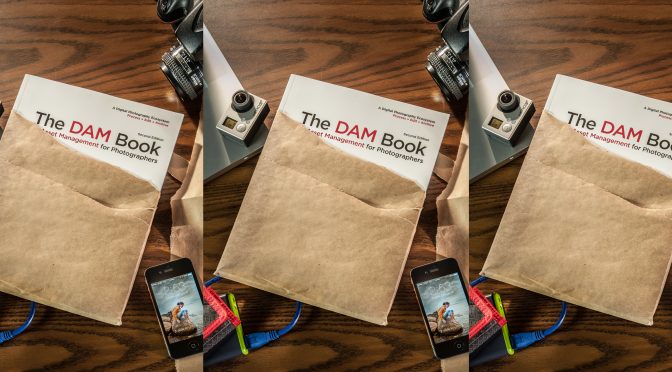After a very long wait, I can report that The DAM Book 3 is really taking shape and I can see the light at the end of the tunnel. I’ve spent the last several months researching, writing new content, and reorganizing the book. I will have a publication date and table of contents to announce by the end of August.
What’s new?
Here’s some of the new stuff.
Connected Objects, Connected Collections – One of the greatest changes we’re seeing is the inherent connectedness of images – often from the moment of capture. Born-connected images have particular DAM challenges and opportunities. This is partly covered by the chapter on publishing and sharing, but the whole notion of connectedness will thread throughout the book, as it touches every part of DAM technology and workflow.
Publishing and Sharing – I have an entirely new chapter on the ways that you can share images out of your collection. I’ll define the difference between Exporting, Publishing, Integrating, and Embedding. Each of these methods of sharing requires different workflows and tools, and each has its own strengths.
 Cloud Services – Cloud-based services are an essential part of storage and distribution for most photographers/collection managers. I’ll lay out the landscape of these, and how you should understand what each can do (and what each one cannot do). My work over the last couple of years designing Photoshelter Libris has been a tremendous opportunity to better understand how cloud fits in to your workflow.
Cloud Services – Cloud-based services are an essential part of storage and distribution for most photographers/collection managers. I’ll lay out the landscape of these, and how you should understand what each can do (and what each one cannot do). My work over the last couple of years designing Photoshelter Libris has been a tremendous opportunity to better understand how cloud fits in to your workflow.
Photography as Language – The most tectonic change in the world of photography is its transformation into a language that is now spoken by nearly everyone. This has some really important ramifications for everyone – but particularly for photographers and collection managers. DAM is now becoming an essential part of communication strategy that goes far beyond the marketing department. Photography-as-language increases the need for, and changes the nature of, DAM. I’ll lay out the case for this, and help you prepare for this increasingly important development.
Note that this was the subject of my 2016 SXSW presentation with Dennis Keeley, where we explored the ramifications for photography “native speakers” and institutions alike.
Network Attached Storage – NAS was pretty immature technology when the last edition of the book was published, and since then it’s come of age. NAS devices have become quite capable for remote access to a collection, automatic offsite backup and as local media servers. I’ll help you understand if NAS addresses your needs.
Artificial Intelligence – Commercial AI is starting to become a commodity, and is showing up in enterprise DAM (such as Extensis linking with Clarifai). Of course, we’re also seeing this on the desktop with facial recognition software. I’ll help untangle what it’s good for and what it’s not good for, and how to spot important changes int he technology.
Note: This was the subject of my 2017 SXSW panel with Ramesh Jain and Anna Dickson.
 Less workflow, more ecosystem – When we started DAM Useful Publishing, our goal was to split publications into workflow and ecosystem. The DAM Book will help you understand how image and DAM technology work, and it describes some workflow theory. But the actual workflow demonstrations are now split into the DAM Book Workflow Guides. There are several reasons for this.
Less workflow, more ecosystem – When we started DAM Useful Publishing, our goal was to split publications into workflow and ecosystem. The DAM Book will help you understand how image and DAM technology work, and it describes some workflow theory. But the actual workflow demonstrations are now split into the DAM Book Workflow Guides. There are several reasons for this.
- It helps to keep the book to a manageable size
- It allows me to update on a more organic schedule – as technology changes, I can update a particular book
- It allows me to publish in the proper format. I believe that workflow should be taught with a combination of text and video, and the ecosystem stuff is better communicated with a traditional book format.
It will be a book, not a multimedia book. I love the multimedia ebook for workflow, but I think that this material is better presented as a traditional text-and-figures book. We’ll start with an electronic version, so that we can get it out as quickly as possible. We’ll follow that with a paper version as quickly as we can get one printed. Details to follow.
Special Offer still available – We still have our special offer in force for people who buy The DAM Book 2. If you buy it for $19.95, we’ll give you $15 off the purchase of DAM Book 3.

